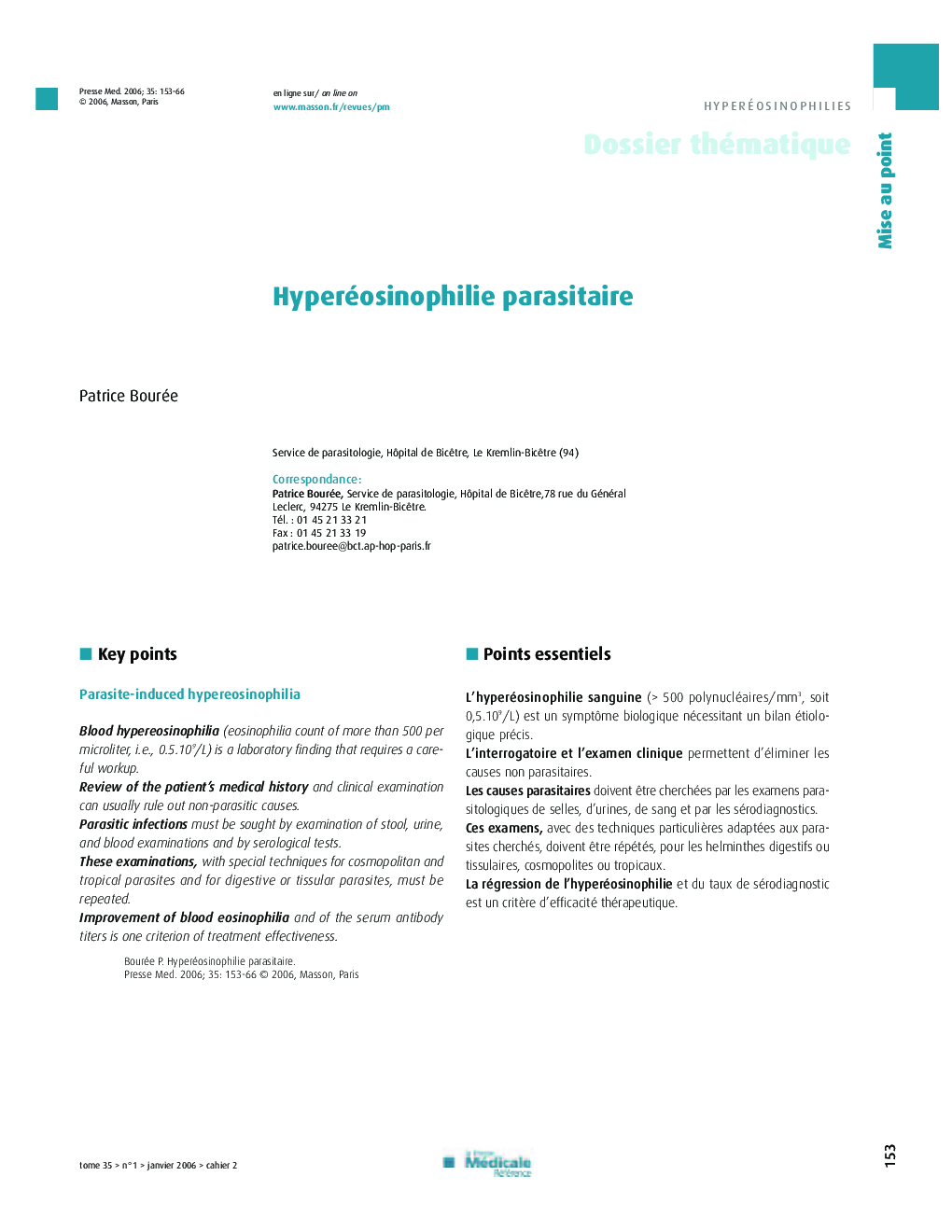| Article ID | Journal | Published Year | Pages | File Type |
|---|---|---|---|---|
| 3820484 | La Presse Médicale | 2006 | 14 Pages |
Points essentielsL’hyperéosinophilie sanguine (> 500 polynucléaires/mm3, soit 0,5.109/L) est un symptôme biologique nécessitant un bilan étiologique précis.L’interrogatoire et l’examen clinique permettent d’éliminer les causes non parasitaires.Les causes parasitaires doivent être cherchées par les examens parasitologiques de selles, d’urines, de sang et par les sérodiagnostics.Ces examens, avec des techniques particulières adaptées aux parasites cherchés, doivent être répétés, pour les helminthes digestifs ou tissulaires, cosmopolites ou tropicaux.La régression de l’hyperéosinophilie et du taux de sérodiagnostic est un critère d’efficacité thérapeutique.
Key pointsBlood hypereosinophilia (eosinophilia count of more than 500 per microliter, i.e., 0.5.109/L) is a laboratory finding that requires a careful workup.Review of the patient's medical history and clinical examination can usually rule out non-parasitic causes.Parasitic infections must be sought by examination of stool, urine, and blood examinations and by serological tests.These examinations, with special techniques for cosmopolitan and tropical parasites and for digestive or tissular parasites, must be repeated.Improvement of blood eosinophilia and of the serum antibody titers is one criterion of treatment effectiveness.
